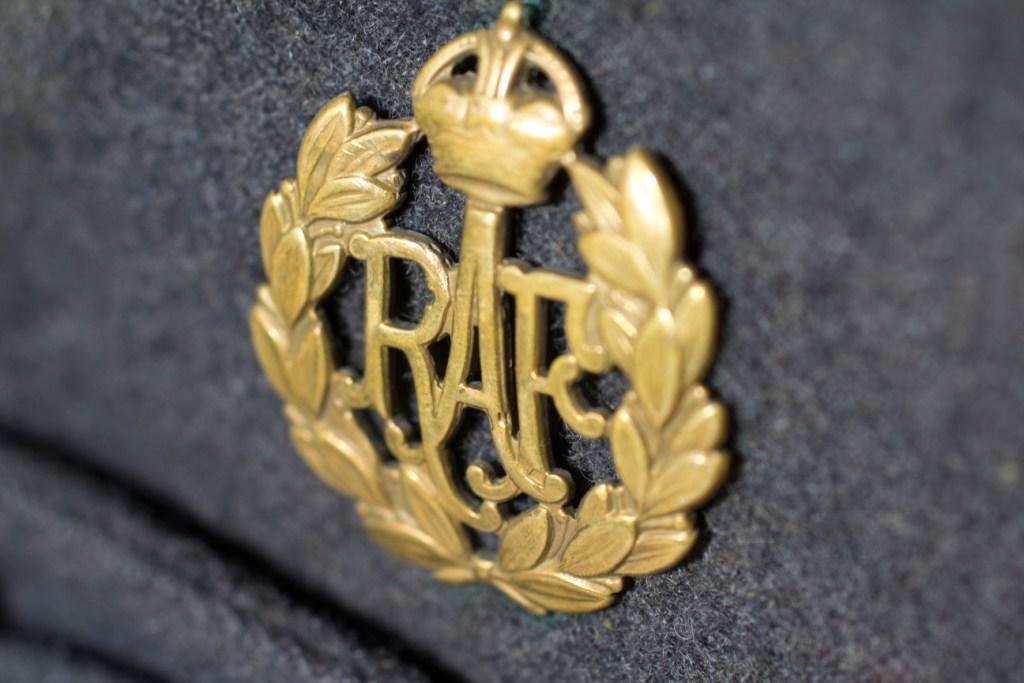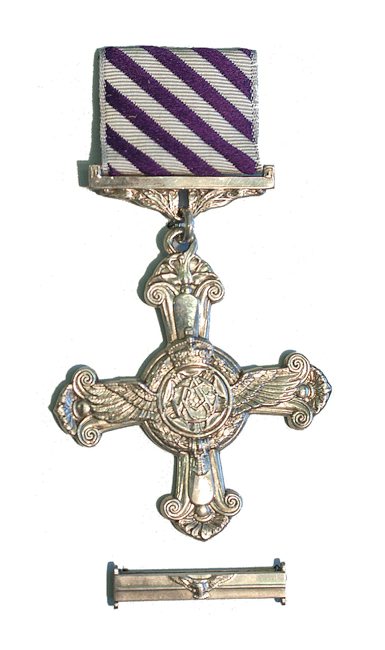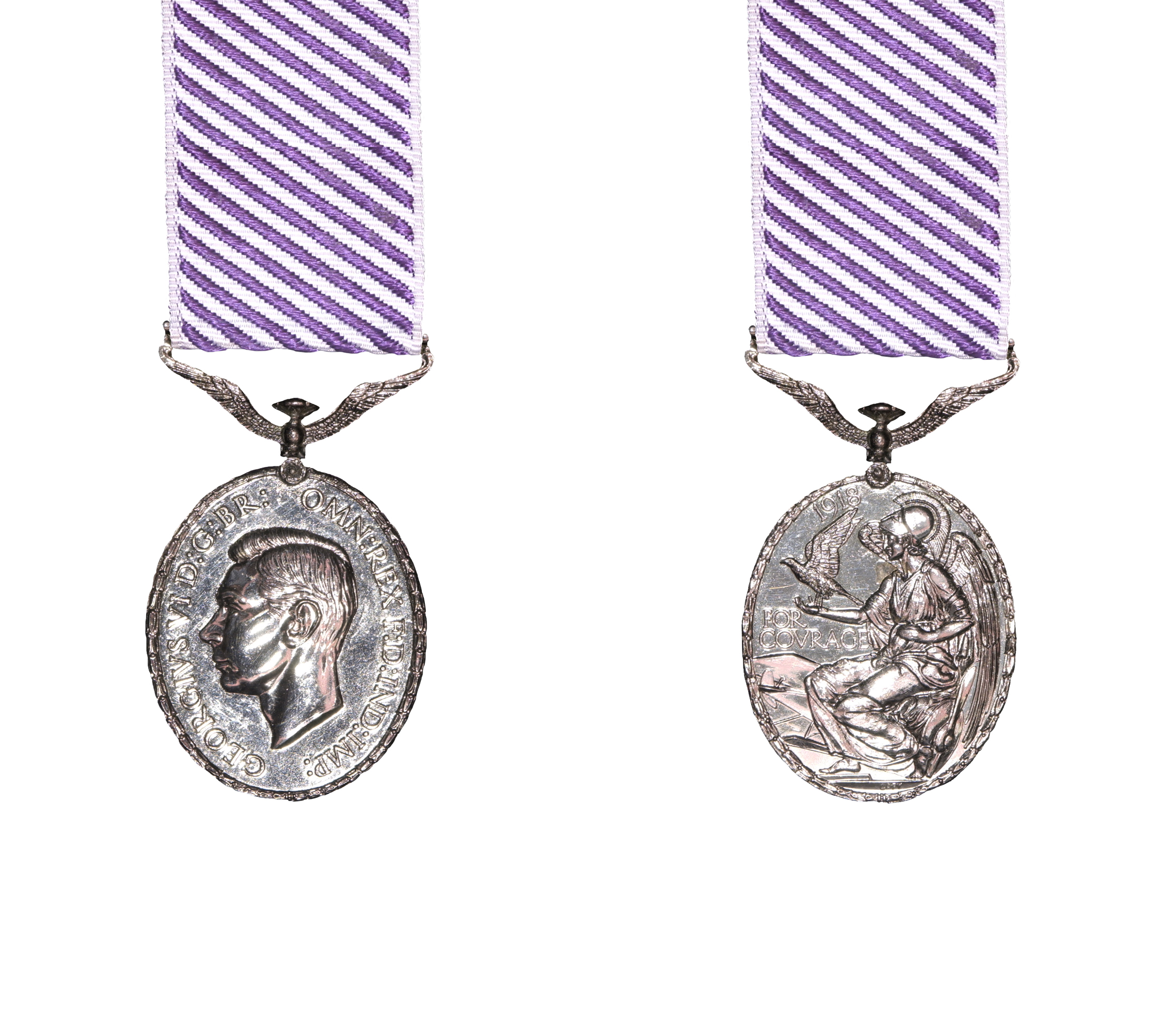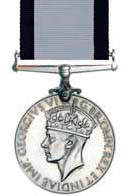100 years of air force honours (part one)
 The link between aviation and war was forged in the early 20th century, with the formation
of the Royal Air Force in April 1918 and the creation of a series of flying honours
that reach their centenary in June 2018.
The link between aviation and war was forged in the early 20th century, with the formation
of the Royal Air Force in April 1918 and the creation of a series of flying honours
that reach their centenary in June 2018.
This article deals with the honours that evolved to recognise bravery and merit in the air, much of it rendered by personnel who served in the British defence forces.
Royal Air Force
The organised use of aircraft for military purposes flowed from an announcement in the House of Commons in 1912, when John Seely, the under-secretary of state for war, explained that a flying corps would be established that embraced soldiers, sailors and civilians who would serve in time of war in any part of the world. What emerged was the Royal Flying Corps (RFC), which operated with separate naval and military wings.
One of the driving forces behind the scheme was David Henderson, whose story was told in the The forgotten father of the Royal Air Force.
The original concept was revised in 1914, when the naval wing was placed under Admiralty control and renamed the Royal Naval Air Service (RNAS), just months before the start of the war against Germany (Gazette issue 28852).
The work of Henderson and his men was acknowledged in early reports from the battle front, including Sir John French’s despatch of 7 September:
‘I wish particularly to bring to Your Lordship’s notice the admirable work done by the Royal Flying Corps under Sir David Henderson. Their skill, energy and perseverance have been beyond all praise. They have furnished me with the most complete and accurate information which has been of incalculable value in the conduct of the operations. Fired at constantly both by friend and foe, and not hesitating to fly in every kind of weather, they have remained undaunted throughout. Further, by actually fighting in the air, they have succeeded in destroying five of the enemy's machines.’ (Gazette issue 28897)
A united air force
The nature of airborne operations altered rapidly during the course of the war, reflecting
developments in aircraft technology, munitions, manpower and strategy. The separate
RFC and RNAS structure was found to be wanting, which was addressed by creating an
Air Board with members from the Admiralty and Army Council. Lord Cowdray became the
first president, but the Board was short-lived, and by November 1917, legislation
was in place to allow for the creation of a united air force.
The Gazette reported some of the documents associated with raising the new air force. The first secretary of state was Lord Rothermere, who signed the warrant of 7 March 1918, which gave the Royal Air Force its name (Gazette issue 30579). Rothermere’s tenure was also brief, and in April, he was succeeded by William Weir, the chairman of the Glasgow firm of engineers and director general of aircraft production. It was therefore Weir who was the minister responsible for countersigning the royal warrant of 3 June 1918, which established the first air force honours.
Air force honours
Prior to Weir’s warrant, bravery in the air was rewarded with decorations from the existing naval and military pools. The RNAS and RFC personnel who were honoured under the old system included several officers who later earned one of Weir’s awards, such as Cecil Darley and Basil Catchpole.
Flight Lieutenant Darley of the RNAS earned the Distinguished Service Cross (DSC) during an action over Bruges, when one engine seized, but he still managed to drop his bombs and to fly home on one engine (Gazette issue 30227). Darley gained a bar to his DSC for carrying out night raids on aerodromes, docks and other installations (Gazette issue 30635). Captain Catchpole was granted the Military Cross (MC) after flying at low altitudes over the enemy lines under heavy anti-aircraft and machine-gun fire. His citation referred to three consecutive days’ work, which included observing hostile batteries, dropping bombs and firing rounds into farms, orchards and trenches (Gazette issue 30901).
The four awards created by Weir’s warrant consisted of the Distinguished Flying Cross (DFC) and Distinguished Flying Medal (DFM) for ‘acts of valour, courage and devotion to duty whilst flying in active operations against the enemy’, while the Air Force Cross and Medal (AFC and AFM) were for similar acts, but not against the enemy, with provision being made for bars to be awarded for further acts.
The criteria for the award of the honours have changed a number of times, and the present regulations which date from 2002 exclude the ‘meritorious service’ category that applied to the AFC, which is now limited to non-operational acts ‘of exemplary gallantry while flying’.
An important innovation was the decision to recognise services performed outside active operations, as there was no equivalent non-combatant naval DSC or army MC, although the Albert Medal could be granted for such acts performed at sea or on land. The four new honours were available to the RAF, and to the air forces of the self-governing dominions, with the DFC and AFC being allocated to officers and warrant officers and the DFM and AFM to non-commissioned officers and men.
Birthday honours list
An announcement about the new honours was published with the main Birthday honours list on 3 June 1918 (Gazette issue 30730), although the warrant was not gazetted until December 1919 (Gazette issue 31674). The initial flying list was also gazetted on the King’s official birthday (Gazette issue 31674), with the first DFC awarded to Captain William Anderson of the Australian Flying Corps.
The majority of awards were connected with operations in France and Flanders, but also included service in places such as Egypt, Italy, Mesopotamia and Palestine. More than 1,100 DFCs and 100 DFMs were awarded during the war, and some were gazetted with citations, as with the crosses for the two officers mentioned earlier.
Cecil Darley’s DFC citation explained that: ‘During the past two years he has been flying in active operations, twelve months of which was on night-flying bombing work, being on one occasion in the air in bad weather for 7 1/2 hours. On several occasions he has carried out two raids on the same night, and during the past month he successfully attacked a very formidable enemy position from a height of 200 feet in the face of very intense fire' (Gazette issue 30827).
Darley received his DFC from the King in July 1919, but was killed two months later when his Vickers-Vimy crashed near Rome, in an incident that earned his brother – then Squadron Leader Charles Darley – an Albert Medal (Gazette issue 32732).
Basil Catchpole attended the same investiture as Darley, and his DFC citation noted: ‘This officer has at all times set a magnificent example of courage and determination to his Flight, and it is very largely owing to his energy and judgment that the marked success which has been obtained by his Flight, both in observation for our long range artillery and in photography of their objectives, is due’ (Gazette issue 30989).
Some wartime recipients pursued public careers, including two men who were invested at the same time as Darley and Catchpole: Hervey Rhodes and Wedgwood Benn. Rhodes was a woollen worker before the war and earned his DFC and bar in actions that included the destruction of five enemy aircraft (Gazette issue 30827 and 31046). He later sat in the House of Commons and became a peer and a knight of the Garter. Benn was a sitting member of parliament when he earned his DFC for work that included an attack on an aerodrome and night flights over enemy lines (Gazette issue 30913), and he later became a viscount (Stansgate) and the political head of the RAF as secretary of state for Air in Attlee’s 1945 administration.
A few DFCs gained the high military distinction of the grand cross of the Order of the Bath (GCB), including Sholto Douglas, who was military governor of the British zone of Germany after World War 2, while Keith Park played an important role in the Battle of Britain in 1940 and held air commands in Malta, the Middle East and South East Asia.
The nation marked the loss sustained by the airborne forces during the war at a memorial service which was held in Westminster Abbey on 19 February 1919, when the King was accompanied by his son Prince Albert (later King George VI) who was serving in the Royal Air Force, and who wore his group captain’s uniform four years later when he married Lady Elizabeth Bowes-Lyon.
Insignia
The medal design
 The DFC and DFM were designed by Carter Preston, who also created the memorial plaque
that commemorated the men and women who fell during the war.
The DFC and DFM were designed by Carter Preston, who also created the memorial plaque
that commemorated the men and women who fell during the war.
Preston's designs combined aviation themes, as the cross incorporated propellers and a winged rose with the letters RAF, while the medal showed Athena Nike seated on an aeroplane, with a hawk rising from her arm. The cross carried the King’s cypher on the reverse, while the medal showed his effigy on the obverse. The riband was of violet and white horizontal stripes, which were broad for the DFC and narrow for the DFM. The riband was altered to diagonal stripes in July 1919, in a warrant signed by Winston Churchill, Weir’s successor as secretary of state (Gazette issue 31674).
Preston’s work on the air force awards were early developments in a long career, and three of his designs appeared in medals worn by many holders of the DFC and DFM, including the General Service Medal, which marked operations ranging from South Persia in 1918 to Brunei in 1962, as well as the 1939-45 War Medal and the Korean War Medal.
The air force insignia was not ready until 1919, when some of it was supplied by the medallists John Pinches rather than the Royal Mint. The first large-scale presentation was held at Buckingham Palace on 24 July 1919, when DFCs were presented to Darley, Catchpole, Rhodes, Benn and some of their comrades. The ceremony took place at a time when the public was learning about achievements in civil aviation. Alcock and Brown had completed the first trans-Atlantic flight on 15 June and were appointed knight commanders of the Order of the British Empire (KBE) (Gazette issue 31422), while Major George Scott became a CBE after he reached Norfolk on 13 July 1919 on the first return journey by an airship to the US (Gazette issue 31519).
Only 146 DFCs and 76 DFMs (including bars) were gazetted between the start of 1920 and the beginning of World War 2. The early post-war awards reflected services in Russia, while the majority of the honours which followed were for flying in frontier operations in Afghanistan, India, Iraq and Kurdistan, as well as a few connected with the Palestine disturbances in the 1930s.
Some personnel added bars to their DFC between the wars, including Harold Whistler, who gained a second bar in 1929 for services in the operations against the Akhwan in the Southern Desert, Iraq (Gazette issue 33477). One officer earned three decorations during the period, as Stafford Harris was awarded the DFC in 1924 for services with the Waziristan Force, and two bars in the 1930s for operations on the north-west frontier of India (Gazette issue 33976).
World War 2
The extensive use of air power during the war against Nazi Germany was reflected in a significant increase in the number of flying honours by comparison with the war against imperial Germany, with around 21,000 DFCs and 7,000 DFMs being awarded. The distribution of the crosses and medals also reflected the altered structure of the flying services, as the Royal Air Force of 1918 had been supplemented by a number of auxiliary and reserve units, including the Reserve of Air Force Officers and the RAF Volunteer Reserve, which were launched in 1923 and 1936.
The earliest DFC of the war was awarded to Kenneth Doran for an action on 4 September 1939: ‘this officer led an attack against an enemy cruiser. In face of heavy gun fire and under extremely bad weather conditions he pressed home a successful low attack with great determination’ (Gazette issue 34705). The first DFM was conferred on William Willits for gallantry in combat with a flying boat after the pilot was shot through the head (Gazette issue 34724). Flight Lieutenant Doran and Sergeant Willits were invested by the King during a visit to an air station in the north of England on 2 November 1939, and photographs of the ceremony appeared in the national press.
The awards which followed Doran’s cross include well-known recipients such as Guy Gibson and Douglas Bader. Flying Officer Gibson gained his DFC in 1940 and added a bar (and DSO and bar) before being awarded the Victoria Cross for his part in one of the most devastating attacks of the war. More than 30 men from 617 Squadron were noticed in the same Gazette, which reported four bars to the DFC, 10 DFCs, one bar to the DFM and 11 DFMs.
The citation noted: ‘On the night of 16th May, 1943, a force of Lancaster bombers was detailed to attack the Moehne, Eder and Sorpe dams in Germany. The operation was one of great difficulty and hazard, demanding a high degree of skill and courage and close co-operation between the crews of the aircraft engaged. Nevertheless, a telling blow was struck at the enemy by the successful breaching of the Moehne and Eder dams’ (Gazette issue 36030).
Gibson and his dam-busting colleagues were invested by the Queen, as the King was visiting the forces in North Africa and Malta, where he announced the creation of what would become the 1939-45 Star, which was issued to most holders of the wartime flying awards. Some personnel also received the Air Crew Europe Star, which marked operational flying from United Kingdom bases over Europe.
Douglas Bader was invalided out of the RAF in 1933 after he lost his legs in a flying accident, but he rejoined when war broke out, and received the DFC in January and a bar in September 1941. The citation noted: ‘This fearless pilot has recently added a further four enemy aircraft to his previous successes; in addition, he has probably destroyed another four and damaged five hostile aircraft. By his fine leadership and high courage Wing Commander Bader has inspired the wing on every occasion’ (Gazette issue 35270).
Bader’s bar was gazetted shortly after he was taken prisoner, which did not end until he was released from Colditz in 1945. After the war, his work for the disabled brought him a knighthood, and his DFC was pictured in the press on the eve of being carried at his memorial service in St Clement Danes – the RAF’s memorial church in London – when an address was given by another DFC, Group Captain Leonard Cheshire VC.
Bader’s medals also included the Battle of Britain clasp, which was worn with the 1939-45 Star by those fighter aircraft crew who flew in operational sorties between July and October 1940, many of whom earned the DFC or DFM. The same men were also honoured in the Battle of Britain Memorial Chapel in Westminster Abbey, which was dedicated in 1947.
Conspicuous gallantry
 An imbalance in the defence force awards was addressed during the war, as the navy
provided the DSC for officers and the Conspicuous Gallantry and Distinguished Service
Medals for other ranks, while the army equivalents were the Military Cross and the
Distinguished Conduct and Military Medals. A similar three-tier structure was adopted
for the air forces with the creation of the Conspicuous Gallantry Medal (Flying) in
November 1942, which rewarded acts performed in active operations against the enemy
(Gazette issue 35864).
An imbalance in the defence force awards was addressed during the war, as the navy
provided the DSC for officers and the Conspicuous Gallantry and Distinguished Service
Medals for other ranks, while the army equivalents were the Military Cross and the
Distinguished Conduct and Military Medals. A similar three-tier structure was adopted
for the air forces with the creation of the Conspicuous Gallantry Medal (Flying) in
November 1942, which rewarded acts performed in active operations against the enemy
(Gazette issue 35864).
The first flying CGM was Leslie Wallace of the Royal New Zealand Air Force, who tried to put out flames despite having received a bullet wound to the leg when his aircraft was hit during a mission to Munich (Gazette issue 35904). The RAF’s first CGM was George Dove, who was heading for Milan when his aircraft was attacked. The citation noted: ‘The fuselage became a mass of flames reaching through the mid-upper turret manned by Flight Sergeant Dove. Ammunition in the turret boxes and ducts commenced to explode in all directions. In the face of an appalling situation, Flight Sergeant Dove coolly remained at his post. Although he was burned about the hands and face, he manned his guns with grim resolution, skill and accuracy. He delivered a devastating burst at the attacker, which had already been engaged by the rear gunner and succeeded in destroying it.’ One officer was appointed a DSO and three of Dove’s colleagues received the CGM for this action.
On rare occasions, all three air force honours were awarded for the same incident, as in 1943 when The Gazette reported what happened when a bomber was attacked on its way to the Ruhr. The rear gunner was fatally wounded, while the air bomber (Pilot Officer Raymond Hopkins), the navigator (Flying Officer Reginald Clayton) and the wireless operator (Sergeant Frederick Blair) were wounded, but they succeeded in getting their aircraft home. The captain, Sergeant Edward Hicks, was awarded the CGM, while Hopkins, Clayton and Blair received the DSO, DFC and DFM (Gazette issue 36015).
The CGM was used just over 100 times during the war, and only one award was made after that, with the grant to John Coughlan of the Royal Australian Air Force for service in Vietnam.
Post-war
The DFC and DFM were used after the war, when the main areas of operational flying included Malaya, Korea and Vietnam, together with more recent engagements in Afghanistan, the Gulf, Iraq and Kosovo. Since the start of the present reign in 1952, a total of 385 Crosses (including 26 bars) and 80 Medals have been gazetted, of which only half were conferred on RAF personnel, with more than 50 being presented to members of the British army and navy and around 140 Commonwealth awards, mainly to Australians.
The post-war DFCs include Peter Squire, who served in the Falklands in 1982. The citation explained that he ‘led his Squadron with great courage from the front flying 24 attack sorties. He flew many daring missions, but of particular note was an attack at low level with rockets on targets at Port Stanley Airfield in the face of heavy anti-aircraft fire when both he and his wing man returned damaged.... Wing Commander Squire has shown outstanding valour and steadiness under enemy fire, and has led by brave example’ (Gazette issue 49134). Squire later became chief of the air staff, received the grand cross of the Bath and served as chairman of the Imperial War Museum.
Only two women have received the DFC, with the first being gazetted in 2008 to mark the gallantry of Flight Lieutenant Michelle Goodman in bringing medical assistance to a casualty following a mortar attack in Iraq (Gazette issue 58633).
Two changes to the scope of the air force honours were introduced in the 1990s. The first reflected the decision of the principal Commonwealth users – Australia, Canada and New Zealand – to stop submitting recommendations for the DFC, CGM and DFM and to substitute local honours. The process began in Australia in January 1991, with the creation of the Victoria Cross for Australia and three decorations, the Star of Gallantry and the Medal and Commendation for Gallantry. Canada and New Zealand introduced similar graded awards for members of their defence forces in December 1992 and September 1999, respectively.
The second change followed the prime minister’s statement in March 1993 about ending the rank-based approach to awards, which was followed by the defence secretary’s announcement in October 1993 that ultimately led to the CGM and DFM being replaced by the Conspicuous Gallantry Cross and the DFC.
The last DFM was conferred on Staff Sergeant Trevor Sullivan of the Army Air Corps for gallantry in Northern Ireland (Gazette issue 53453), while the RAF’s final medallist was Sergeant Paul Holmes, whose DFM for services in the Gulf war of 1991 brought to an end part of the story of air force honours that began shortly after the formation of the Royal Air Force (Gazette issue 54393).
See 100 years of air force honours (part two), which explores non-operational air force honours and related flying awards.
About the author
Russell Malloch is a member of the Orders and Medals Research Society and an authority on British honours.
Images, from top: RAF insignia WW2, Alamy; Distinguished Flying Cross, © Crown Copyright/MoD; Distinguished Flying Medal, obverse and reverse © New Zealand Defence Force; Conspicuous Gallantry Medal (Flying), © New Zealand Defence Force
See also
